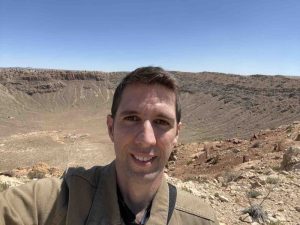External Partners
- University of Arizona
Project Description
The proposed research for the YORPD program has four main objectives:
1. To determine the rotation state of small near-Earth objects (NEOs) using lightcurves from the MORIS Camera on the 3.0-meter NASA Infrared Telescope Facility (IRTF).
2. To compositionally characterize small NEOs, i.e., determine mineral abundances and chemistry, and find meteorite analogs using spectral data from the SpeX instrument on the NASA IRTF.
3. To physically characterize small NEOs and constrain their albedo and diameter using spectral data from the SpeX instrument on the NASA IRTF.
4. To obtain laboratory spectral measurements of shock-darkened/impact melts found in ordinary chondrite and HED meteorites to better understand its effect on taxonomic classification and compositional analysis of NEOs.
Scope
As part of the proposed activities, Co-I Sanchez will help with the data reduction and analysis of the telescopic data. Co-I Sanchez will also be in charge of sample preparation, acquisition of laboratory spectral measurements, analysis and interpretation of laboratory spectra. In addition, Co-I Sanchez will be in charge of archiving all the data at the Small Bodies Node of the NASA’s Planetary Data System. Co-I Sanchez will also help in proposal writing and manuscript preparation.
Deliverables
The following list of products is the expected deliverables from Co-I Sanchez as part of this proposed effort.
Near-infrared spectra (0.7-2.5 μm) of ~240 NEOs.
Intimate mixtures of light (unaltered) lithology and shock-darkened/impact melt material (10 wt.% intervals of shock-darkened/impact melt) for 11 ordinary chondrites and 5 HEDs.
Laboratory spectra of intimate mixtures of light and shock-darkened/impact melt lithologies (10 wt.% intervals of shock-darkened/impact melt) for 11 ordinary chondrites and 5 HEDs.
PDS archival products including documentation, metadata and lien resolution.
Peer-reviewed publications, abstracts, observing proposals.

